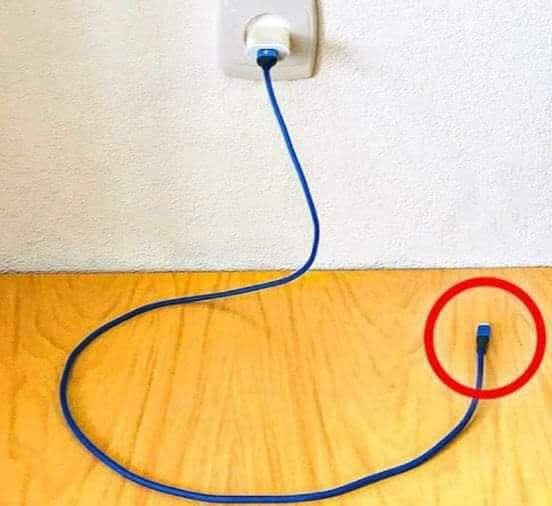ADVERTISEMENT
### **1. It Wastes Energy and Increases Your Electricity Bill**
One of the most significant issues with leaving your charger plugged in is the unnecessary energy it consumes. Even if you’re not charging your phone, the charger continues to draw electricity as long as it’s connected to the outlet. This phenomenon is known as **standby power** or **phantom energy**, and while each charger may only consume a small amount of power when idle, it can quickly add up over time, especially if you have several chargers plugged into different outlets.
While this energy usage might seem minimal, it can still have a noticeable impact on your monthly electricity bill. The U.S. Department of Energy estimates that idle electronics account for nearly 10% of household energy use. That means, over the course of a year, leaving chargers plugged in unnecessarily could cost you more than you realize.
#### **What You Can Do:**
– **Unplug chargers when not in use:** A simple habit to adopt is unplugging your charger when it’s not actively charging your device. This can help conserve energy and save you money in the long run.
– **Use a power strip with an on/off switch:** This allows you to cut the power to multiple devices at once, making it easier to avoid wasting energy when chargers are not needed.
—
### **2. It Poses a Fire Hazard**
Another significant reason to avoid leaving your charger plugged in without your phone is the potential **fire hazard** it creates. While modern chargers are generally designed with safety in mind, they are still electronic devices, and like all electronics, they can malfunction or overheat. A charger that is plugged in but not in use may heat up, especially if it’s of lower quality or if it’s damaged.
In some cases, chargers can even become hot enough to ignite nearby combustible materials, such as fabrics, papers, or even dust. If the charger is poorly made or of subpar quality, it could also suffer from **overcharging**, which could cause the charger to overheat and increase the risk of fire.
#### **What You Can Do:**
– **Invest in high-quality chargers:** Always opt for reliable, certified chargers from reputable brands. These typically have better safety features that reduce the risk of overheating or malfunction.
– **Avoid using damaged chargers:** If you notice any frayed wires, burn marks, or unusual heat when using your charger, it’s best to replace it immediately to avoid any safety risks.
– **Unplug chargers when not in use:** Again, the safest practice is to simply unplug your charger when you’re not charging your phone, reducing the chance of potential hazards.
—
### **3. It Reduces the Lifespan of Your Devices and Charger**
Finally, leaving your charger plugged in can damage both your devices and the charger itself over time. This occurs because chargers, when left plugged in and unused, can still generate a small amount of heat. Over time, this excess heat can gradually degrade the charger’s internal components, shortening its lifespan.
Similarly, if your charger is plugged in for long periods without being used to charge a device, it can start to cause **electrical wear** on the plug, which can damage the outlet and lead to poor connections or even prevent the charger from working properly when you do need it.
For your smartphone or any other devices, regularly using the charger and ensuring it’s not exposed to constant heat buildup is crucial for keeping the battery healthy. Overheating, especially in phones, can lead to battery degradation. This can shorten the battery’s capacity, meaning it won’t hold a charge for as long as it used to.
#### **What You Can Do:**
– **Remove the charger when not charging:** Simply unplugging the charger when it’s not in use can significantly extend the life of both your charger and your devices.
– **Keep your devices and chargers in a cool place:** Avoid placing chargers and devices in hot areas (like near windows or on top of heat-producing appliances). This helps maintain the integrity of your battery and charger.
– **Use a smart charger:** Some modern chargers have built-in features that prevent overcharging or overheating. Opting for these can reduce the wear and tear on your devices and chargers.
—
### **In Conclusion**
Leaving your charger plugged into an outlet when it’s not in use may seem like a minor habit, but it could be costing you more than you think. From increased electricity bills to potential safety hazards and shorter lifespans for your devices and chargers, there are plenty of reasons to make the effort to unplug your chargers when you’re not actively using them.
By adopting a few simple practices, like unplugging chargers when they’re not in use, investing in high-quality charging equipment, and ensuring your devices are kept in safe, cool areas, you can protect your home, your electronics, and your wallet.
The next time you go to leave your charger plugged in without your phone, remember these three major reasons and take a moment to unplug. It’s a small habit with big benefits!
ADVERTISEMENT
ADVERTISEMENT
